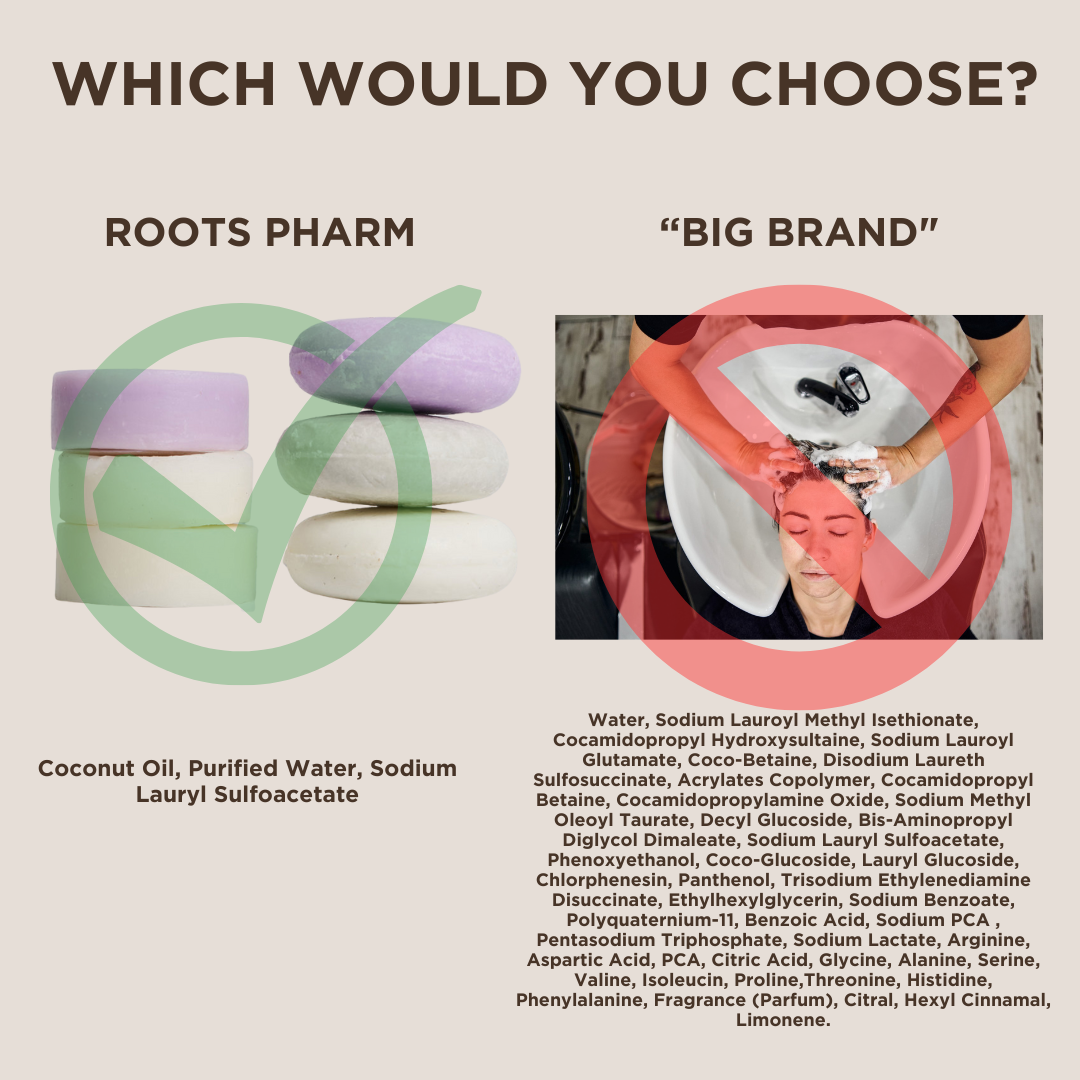If you're a label reader (like us) you may have seen Sodium Lauryl Sulfoacetate listed on our (very short) Shampoo Bar ingredient list and wondered...
"what is this 'Sodium Lauryl Sulfoacetate' ingredient? why is it used? is it non toxic? safe? gentle on sensitive skin...?"
we're here to give you some quick + easy answers!
1. What is Sodium Lauryl Sulfoacetate (SLSA)?
First, some background!
Shampoos work by using molecules called surfactants to create lather and clean the hair. Surfactants work by aligning themselves in such a way that one part of the molecule is facing the air and the other part is facing the water, reducing surface tension and allowing the molecule to trap dirt and remove it from the hair.
Sodium Lauryl Sulfoacetate is one of many surfactants that exist in todays world, but we specifically and carefully chose it due to its superior properties, explained below.
2. Why do we use SLSA in our Shampoos?
The proof is in the pudding!
We're all about choosing non toxic, safe, gentle ingredients, and SLSA was the lucky surfactant that met all of our standards.
Our SLSA is naturally derived from Coconut Oil, as opposed to other surfactants which are synthetically made in labs, and because of its large molecule size, it cannot penetrate the skin, making it a safe, mild, gentle, and non irritating ingredient (while still having all the benefits of a glorious lather and a deep clean for your hair).
3. Is Sodium Lauryl Sulfoacetate (SLSA) a sulfate? Is it the same as Sodium Lauryl Sulfate (SLS)?
Although the names sound similar, they are not the same - do not confuse our SLSA with the dreaded Sodium Lauryl Sulfate (SLS)!
SLSA is a sulfate free, naturally derived, large molecule compound that is gentle, safe and non irritating.
It costs us more than the low-quality lab-made surfactants running rampant out there, but we choose to maintain our standards of safety, gentleness, and effectiveness - and we think your hair and scalp will thank us for that forever!
4. What ingredients should I avoid in my shampoos?
There are dozens reasons why you want to avoid these ingredients, from little "inconveniences" like drying out your hair and scalp & causing irritations to more major health consequences like disrupting your endocrine (hormonal) system (hormones) or being linked to cancers, but we'll keep it short and sweet here.
We just suggest being aware of what's going on your body, reading labels, and avoiding these ingredients. This is not an all inclusive list by any means, but its a good start to raising your awareness around harmful ingredients hidden in product formulas
Lab made surfactants & sulfates:
Ammonium lauryl sulfate, Sodium laureth sulfate, Ammonium laureth sulfate, Sodium trideceth sulfate, Quaternium-15
Preservatives:
Sodium benzoate, Potassium sorbate, Formaldehyde, BHT, BHA
Parabens:
Methylparaben, Isopropylparaben, Ethylparaben, Isobutylparaben, Butylparaben, Propylparaben
Phtalates:
Dibutylphthalate (DBP), dimethylphthalate (DMP), diethylphthalate (DEP)
Others:
Selenium sulfide (found in many dandruff shampoos), Toluene, Resorcinol, Synthetic colors (FD&C' or D&C), Synthetic fragrances (masked on label as “fragrance” or “parfum”)
5. Are there any resources you recommend for checking ingredient safety in products we use or consume?
We love using apps like THINK DIRTY or YUKA to quickly look up ingredients we're unsure of or scan labels and barcodes on products. These apps provide useful information on the safety and toxicity of millions of ingredients in an easy to use database at the palm of your hands!
Got Questions?
Email us anytime at rootspharmllc@gmail.com.
We're always here to helpl

